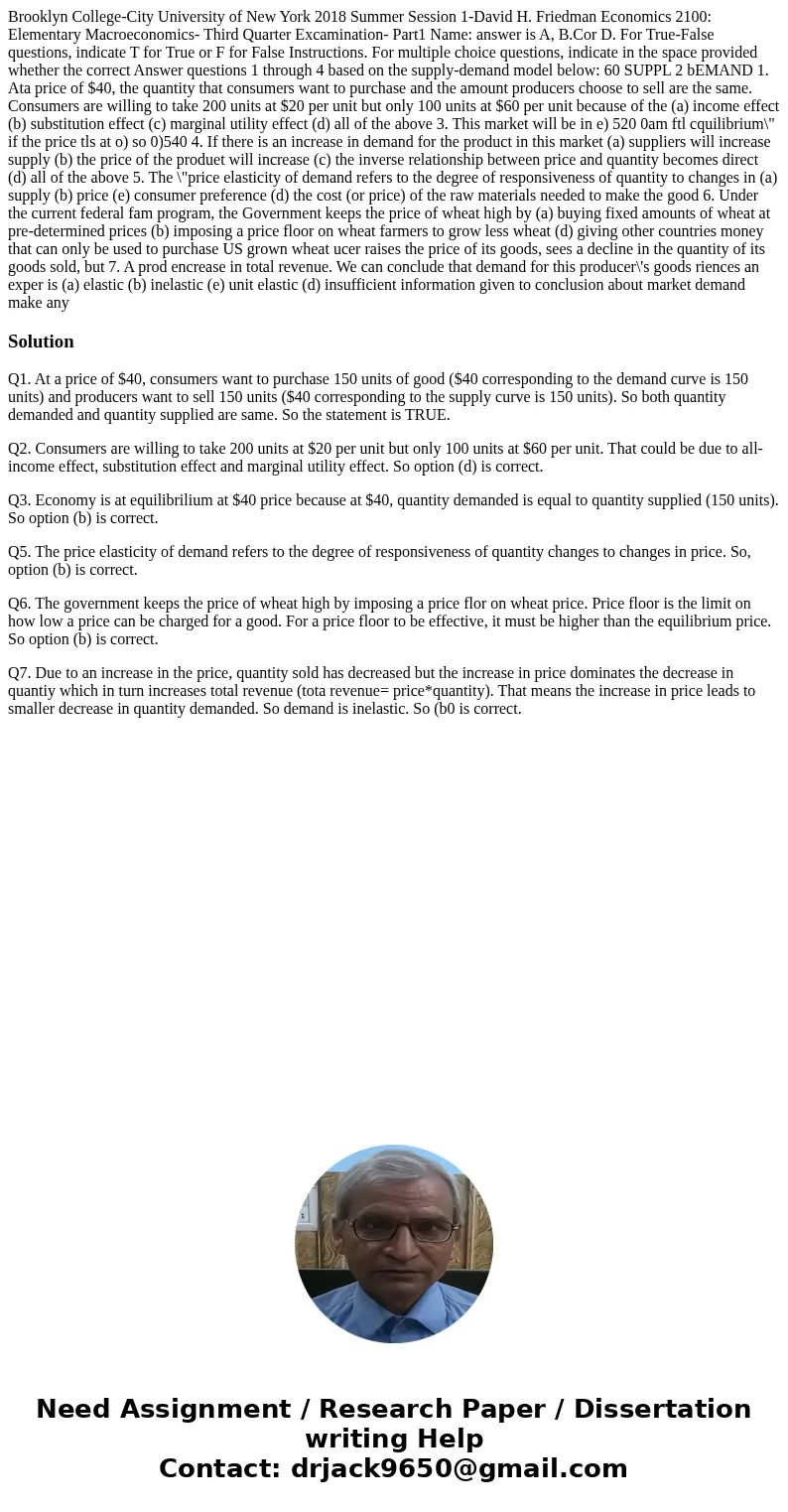Brooklyn College-City University of New York 2018 Summer Session 1-David H. Friedman Economics 2100: Elementary Macroeconomics- Third Quarter Excamination- Part1 Name: answer is A, B.Cor D. For True-False questions, indicate T for True or F for False Instructions. For multiple choice questions, indicate in the space provided whether the correct Answer questions 1 through 4 based on the supply-demand model below: 60 SUPPL 2 bEMAND 1. Ata price of $40, the quantity that consumers want to purchase and the amount producers choose to sell are the same. Consumers are willing to take 200 units at $20 per unit but only 100 units at $60 per unit because of the (a) income effect (b) substitution effect (c) marginal utility effect (d) all of the above 3. This market will be in e) 520 0am ftl cquilibrium\" if the price tls at o) so 0)540 4. If there is an increase in demand for the product in this market (a) suppliers will increase supply (b) the price of the produet will increase (c) the inverse relationship between price and quantity becomes direct (d) all of the above 5. The \"price elasticity of demand refers to the degree of responsiveness of quantity to changes in (a) supply (b) price (e) consumer preference (d) the cost (or price) of the raw materials needed to make the good 6. Under the current federal fam program, the Government keeps the price of wheat high by (a) buying fixed amounts of wheat at pre-determined prices (b) imposing a price floor on wheat farmers to grow less wheat (d) giving other countries money that can only be used to purchase US grown wheat ucer raises the price of its goods, sees a decline in the quantity of its goods sold, but 7. A prod encrease in total revenue. We can conclude that demand for this producer\'s goods riences an exper is (a) elastic (b) inelastic (e) unit elastic (d) insufficient information given to conclusion about market demand make any
Q1. At a price of $40, consumers want to purchase 150 units of good ($40 corresponding to the demand curve is 150 units) and producers want to sell 150 units ($40 corresponding to the supply curve is 150 units). So both quantity demanded and quantity supplied are same. So the statement is TRUE.
Q2. Consumers are willing to take 200 units at $20 per unit but only 100 units at $60 per unit. That could be due to all-income effect, substitution effect and marginal utility effect. So option (d) is correct.
Q3. Economy is at equilibrilium at $40 price because at $40, quantity demanded is equal to quantity supplied (150 units). So option (b) is correct.
Q5. The price elasticity of demand refers to the degree of responsiveness of quantity changes to changes in price. So, option (b) is correct.
Q6. The government keeps the price of wheat high by imposing a price flor on wheat price. Price floor is the limit on how low a price can be charged for a good. For a price floor to be effective, it must be higher than the equilibrium price. So option (b) is correct.
Q7. Due to an increase in the price, quantity sold has decreased but the increase in price dominates the decrease in quantiy which in turn increases total revenue (tota revenue= price*quantity). That means the increase in price leads to smaller decrease in quantity demanded. So demand is inelastic. So (b0 is correct.

 Homework Sourse
Homework Sourse